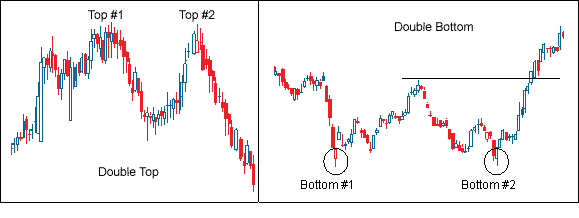Technical Analysis Of Stock Market Learn Basic Charting Patterns
Post on: 16 Июнь, 2015 No Comment

Technical Analysis Of Stock Market Chart Patterns Does Not Have To Be Complicated
Technical Analysis of Stock Market Patterns helps traders determine where markets are headed. This short tutorial will cover the basics so that you can begin analyzing financial markets using reliable and proven charting analysis methods that have withstood the test of time.
Technical Analysis of stock market patterns is based on the assumption that history repeats itself. Certain trading patterns that developed over the years tend to repeat themselves over and over again. These charting patterns tend to signal a high probability move in stocks or other financial markets. Traders watch for these patterns to repeat and use them to help them make trading decisions in different financial markets such as stocks, commodities and currencies.
Basic Charting Patterns Have Withstood The Test Of Time
Many traders believed that computer analysis of financial markets would end technical analysis of stock market patterns; however this has proven not to be the case. As a matter of fact, visual pattern analysis has gained tremendous popularity in recent years and many professional traders rely on visual analysis instead of advanced computer algorithms.
Technical Chart Pattern Are Divided Into Two Separate Categories
There are two primary types of technical chart patterns, continuation and reversal pattern. A reversal pattern signals that a prior trend will reverse upon completion of the pattern. A continuation pattern, on the other hand, signals that a trend will continue once the pattern is complete. Both type of patterns work great with most financial markets and the time frame can be adjusted anywhere from weekly analysis to intraday time frame. This is one of the major benefits of technical charting analysis; it can be applied to any financial market and different time frame with the same level of effectiveness.
Basic Technical Reversal Patterns
A Head and Shoulders Top is a reversal pattern forms after an uptrend and its completion signals a reversal of an uptrend and a beginning of a downtrend. The pattern contains three successive peaks with the middle peak (head ) being the highest and the two outside peaks (shoulders ) being low and roughly equal. The reaction lows of each peak can be connected to form support, or a neckline .
Pay Attention to The Neckline This Is Where Volatility Typically Occurs
A Head and Shoulders Bottom is the exact opposite of the Head and Shoulders Top Pattern. It is a reversal pattern that forms in a downtrend and its completion signals a reversal of a downtrend and beginning of an uptrend.
The line signals the neckline this is where you would place an order to enter the market. When the neckline is broken to the upside a long signal is triggered and when the neckline is broken to the downside a short entry is signaled.
Double Tops and Double Bottoms
Another very popular reversal pattern is the double top and double bottom. This pattern is very similar to the head and shoulders pattern, and is considered one of the most reliable technical patterns for technical chart traders.
These patterns are formed after a sustained momentum move and signal that the trend is about to reverse. The pattern is created when price action tests support or resistance levels twice and backs off each time.
Many Day Traders and Swing Traders Apply Double Tops and Bottoms To Short Term Trading Methods
Double top pattern Market tried to move above a certain price level twice. After two unsuccessful attempts at pushing the price higher, the trend reverses and the price heads lower.
Double bottom pattern – Market tried to go lower twice, but has found support each time. After the second bounce off of the support, the market enters a new trend and heads upward.
The Pennant and the Flag are two very popular continuation patterns
Continuation patterns are the opposite of reversal patterns; the market does not reverse direction but continues in the same direction that the market was moving in prior to beginning the pattern. Usually, markets enter continuation patterns after a strong move in a particular direction. The pattern typically functions as a temporary pause in the trend. The continuation pattern is a good way to enter a volatile market while the market has paused prior to continuing the trend once again. This is where entry risk is the lowest and provides the best risk to reward opportunities for traders. This is one of the reasons why these patterns continue to be very popular with swing traders and day traders alike.
Pennants and Flags Offer Traders Low Risk Entry Opportunities
The main difference between the Pennant and the Flag can be seen in the middle section of the chart pattern. In a pennant, the middle section is characterized by converging trend lines. The flag pattern, on the other hand, shows a channel pattern, with no convergence between the trend lines. In both cases, the trend is supposed to continue going back up.
Remember, the main difference between continuation and reversal patterns are simple. Once the reversal pattern completes, the market is supposed to completely reverse direction while the continuation pattern is simply a short pause in the same direction.
During the next few weeks, I will provide more examples of technical analysis of stock market patterns. So stay tuned. For more on this topic, please go to: Beginners Guide To Stock Sector Analysis and Great Stock Market Tools For Trade Analysis














